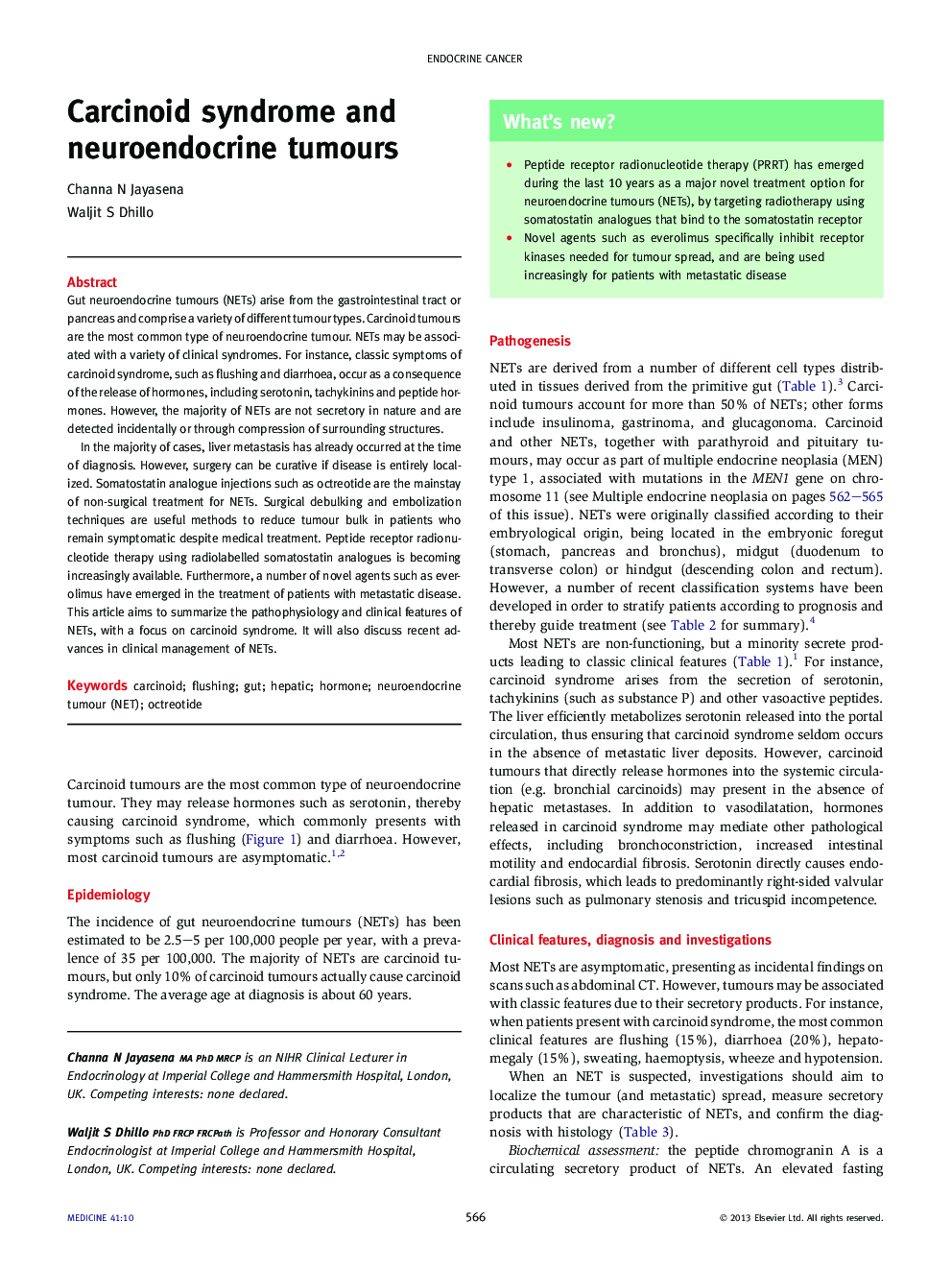| Article ID | Journal | Published Year | Pages | File Type |
|---|---|---|---|---|
| 3803805 | Medicine | 2013 | 4 Pages |
Gut neuroendocrine tumours (NETs) arise from the gastrointestinal tract or pancreas and comprise a variety of different tumour types. Carcinoid tumours are the most common type of neuroendocrine tumour. NETs may be associated with a variety of clinical syndromes. For instance, classic symptoms of carcinoid syndrome, such as flushing and diarrhoea, occur as a consequence of the release of hormones, including serotonin, tachykinins and peptide hormones. However, the majority of NETs are not secretory in nature and are detected incidentally or through compression of surrounding structures.In the majority of cases, liver metastasis has already occurred at the time of diagnosis. However, surgery can be curative if disease is entirely localized. Somatostatin analogue injections such as octreotide are the mainstay of non-surgical treatment for NETs. Surgical debulking and embolization techniques are useful methods to reduce tumour bulk in patients who remain symptomatic despite medical treatment. Peptide receptor radionucleotide therapy using radiolabelled somatostatin analogues is becoming increasingly available. Furthermore, a number of novel agents such as everolimus have emerged in the treatment of patients with metastatic disease. This article aims to summarize the pathophysiology and clinical features of NETs, with a focus on carcinoid syndrome. It will also discuss recent advances in clinical management of NETs.
